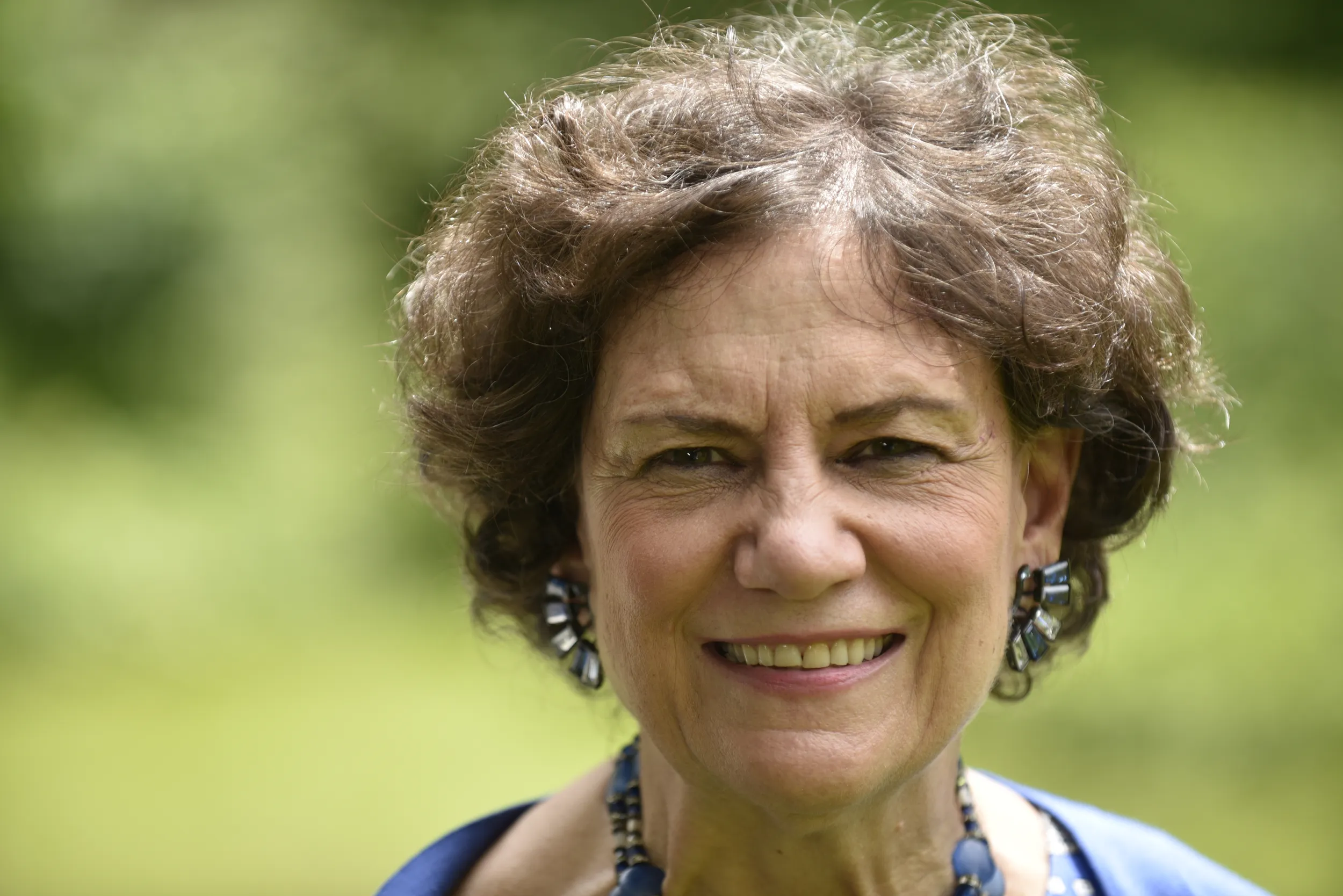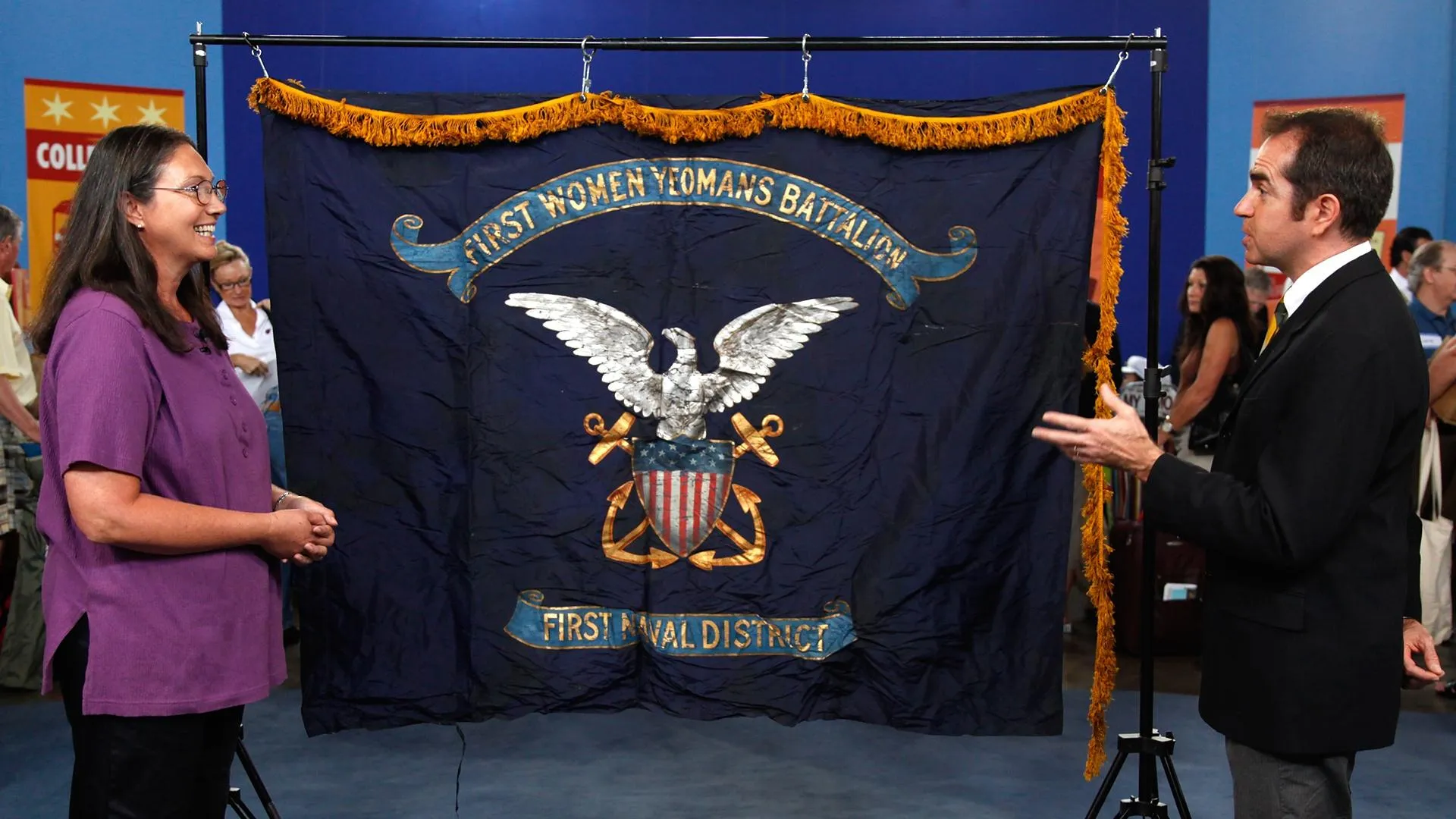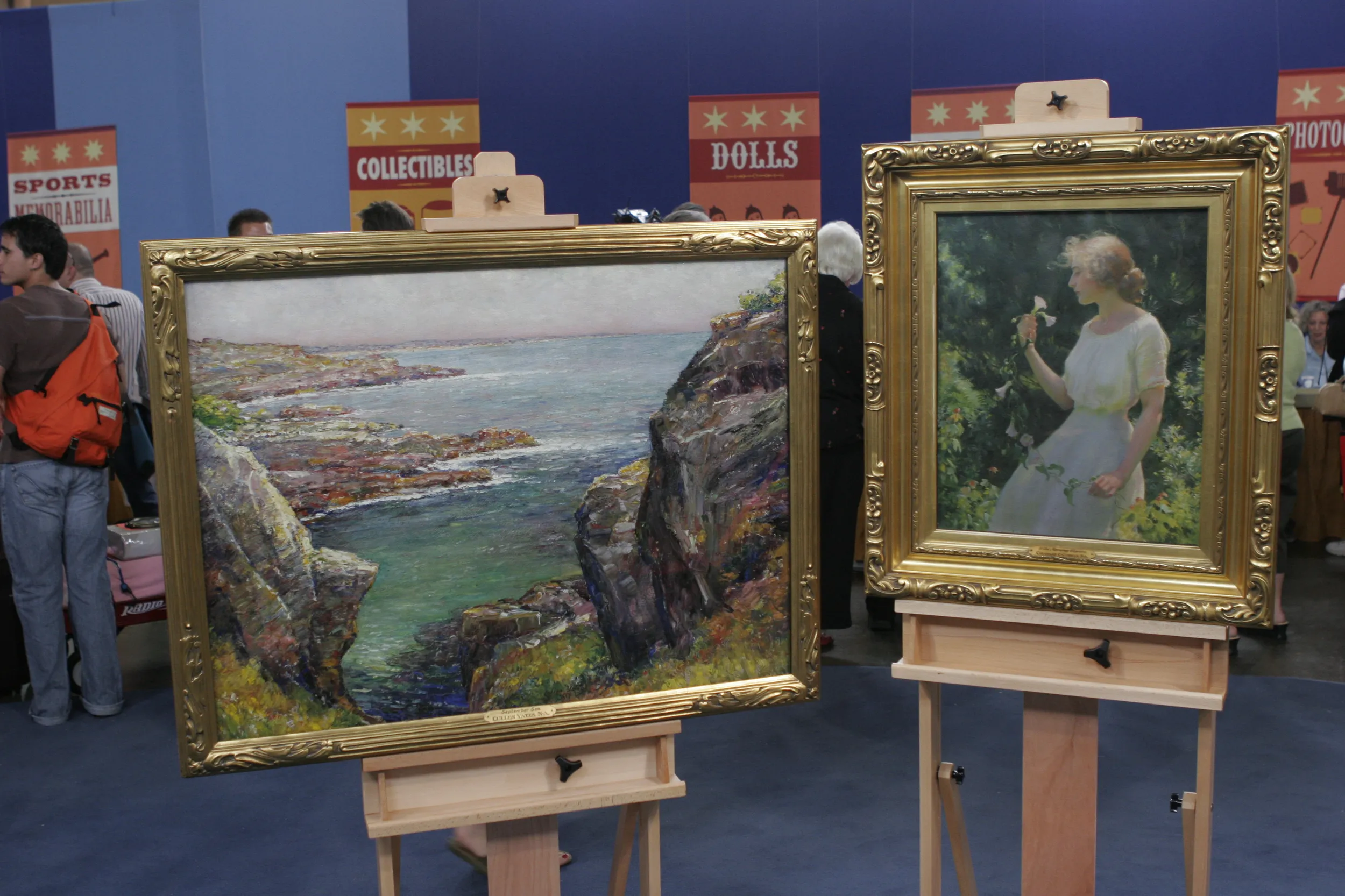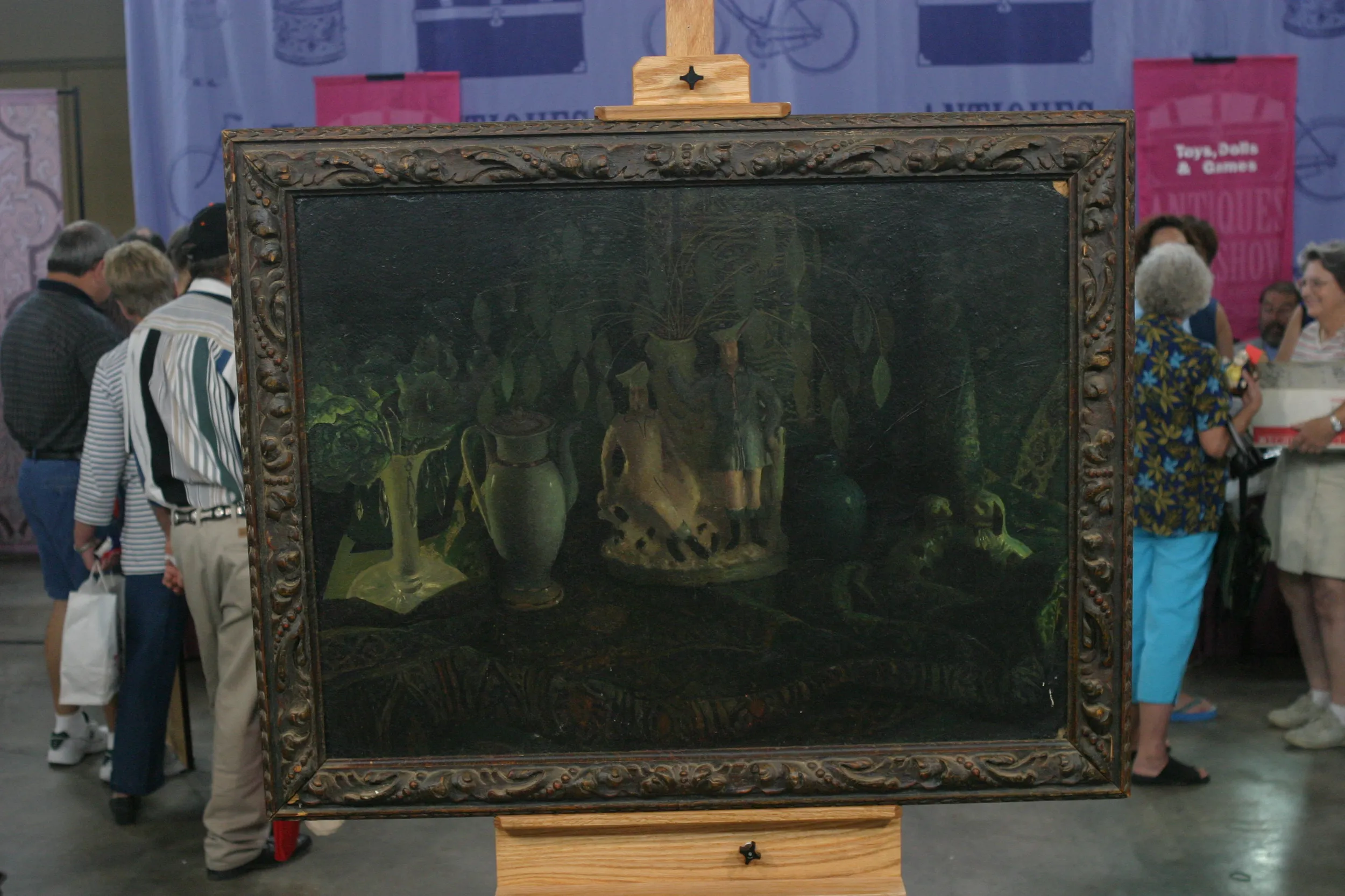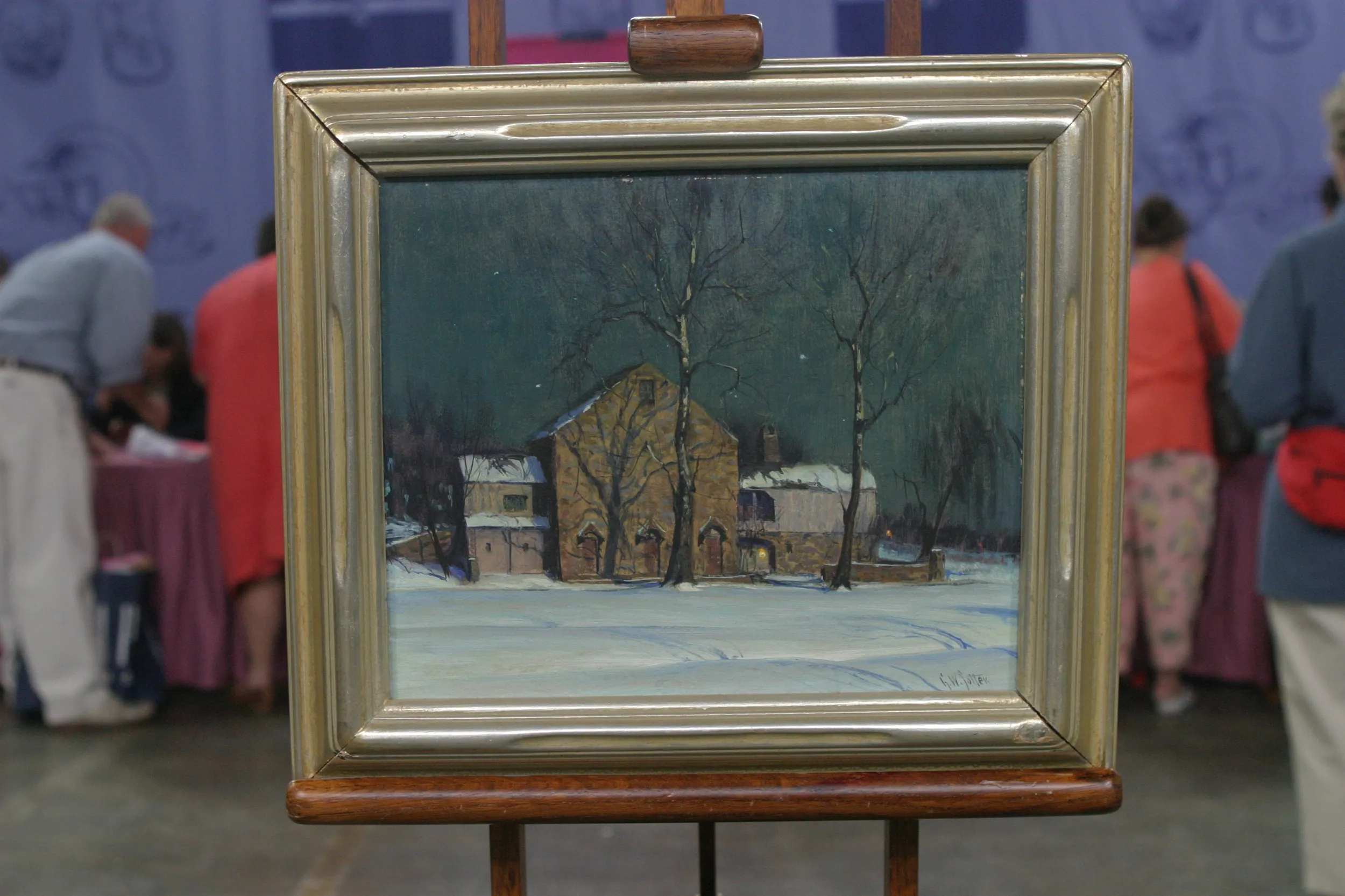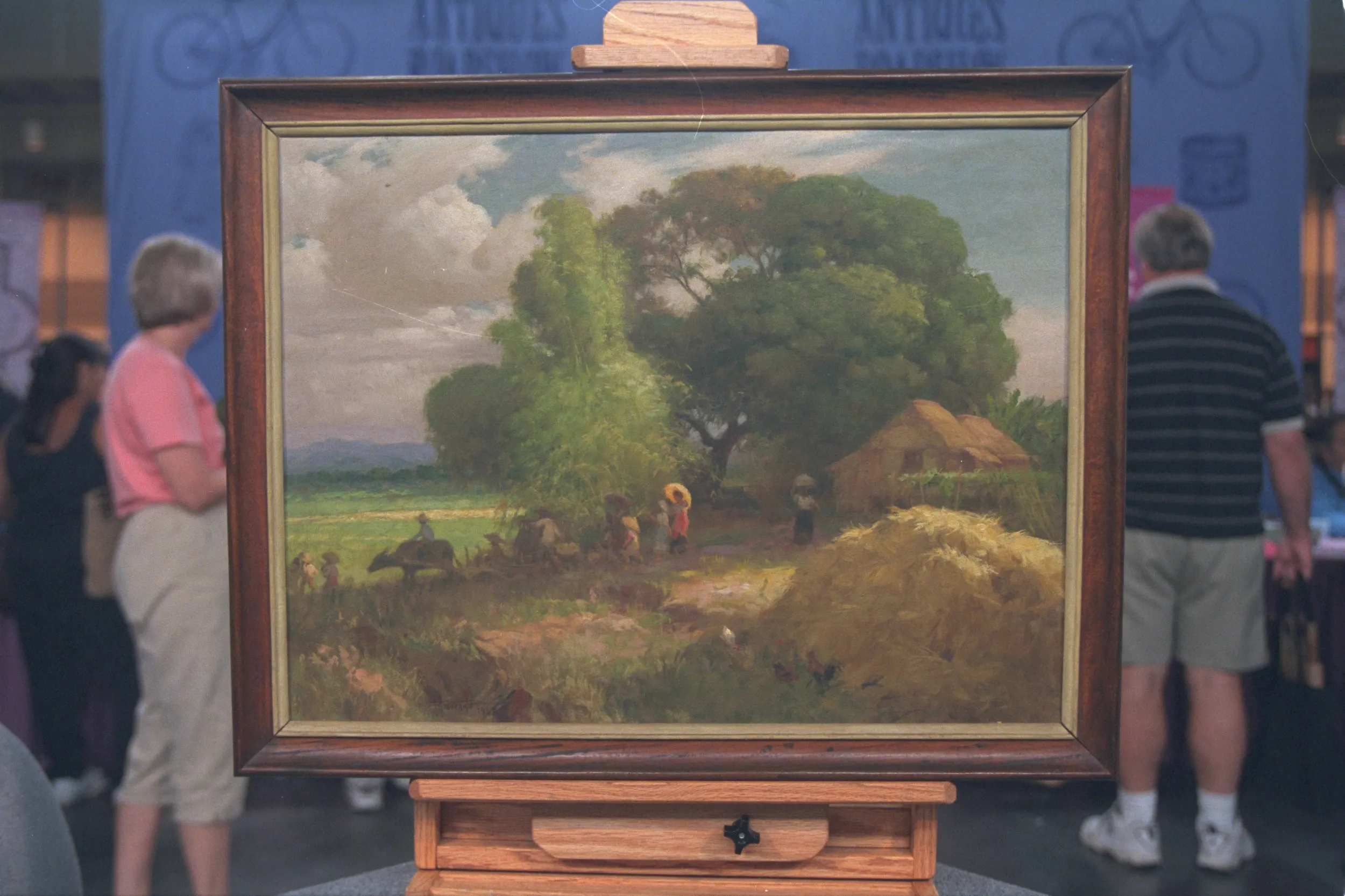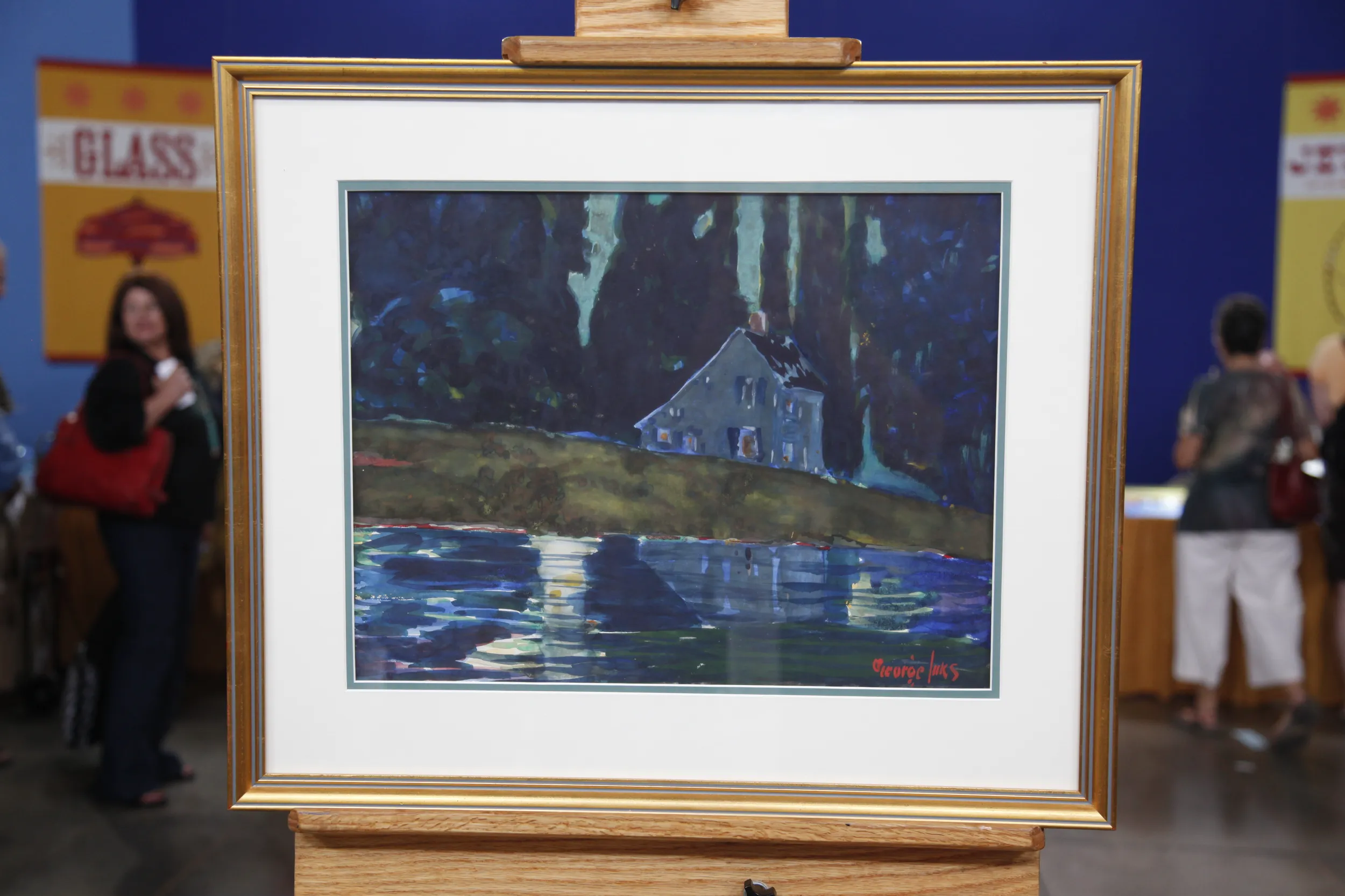GUEST: My great-grandfather was friends with George Luks. They grew up in Pottsville, Pennsylvania.
APPRAISER: Oh, okay.
GUEST: And George Luks actually gave it to my great-grandfather.
APPRAISER: Do you have any idea around what time that would have been?
GUEST: I don't. And it's been passed from my grandmother to my father and then to myself.
APPRAISER: And your grandmother, was she from the East or did she move out here?
GUEST: Yes, she was from Pennsylvania. And she actually went through a little bit of a rough time and lost everything, and this was the one thing she held on to.
APPRAISER: Well, George Luks was quite a colorful character. George really liked carousing around quite a bit. Right. And he was born in Williamsport, Pennsylvania, which is in coal country. Luks goes on to Philadelphia to study at the Pennsylvania Academy, and of course he goes to Europe, like a lot of the other artists did at the time. And then he comes back to Philadelphia and works for a newspaper as an illustrator. He even goes for a while to Cuba for the Spanish-American War and is a war artist over there. Coming back to Philadelphia, he meets a group of other artists, and they were all newspaper illustrators, but they also were painters. And they were very rebellious against the prettiness of American Impressionism. So what they ended up doing was to create their own group. They were called "The Eight" because there were eight of them, and they were also nicknamed "The Ashcan School" because they liked to paint the back alleys of the city and people hanging wash and the plight, or the day-to-day routine, of everyday Americans. Luks's forte, for the most part, was portraiture, and he painted street urchins and beggar women, rag pickers and basically working-class people. And he didn't do as many scenes as some of the other artists in the group. He also painted watercolors, as you can see here. And this is a watercolor heightened with a little bit of gouache. And gouache is sort of the more opaque pigment that you see here. And most of these were done in the 1920s or so. Now, one thing about Luks that is perhaps a little more problematic than other artists is that we see probably half as many Lukses that are fake as are real. And so there are ways in which we try to authenticate the works by Luks. There is no real expert on the artist, so usually we're left to our own devices. But in terms of the watercolors, he normally signs in a very bold red. I have seen watercolors on occasion with little black, wimpy signatures, and they're not by him. The bold density of the watercolor and the brushwork-- very characteristic. And, of course, in your case, it's ironclad provenance, because it came directly from the artist to your family. So that's really exciting. Luks actually died in New York in 1933 as a result of a barroom brawl. He was actually found in a doorstep dead one night. Luks is one of the most desirable artists, and although he didn't do many watercolors, they do come up at auction from time to time, and certainly we see them in the galleries. If this were sold in a gallery, let's say in New York City, it would probably sell in the range of $75,000.
GUEST: Oh, my gosh. (laughs) My dad always said, "Be careful with it." Now I know why. Wow.
